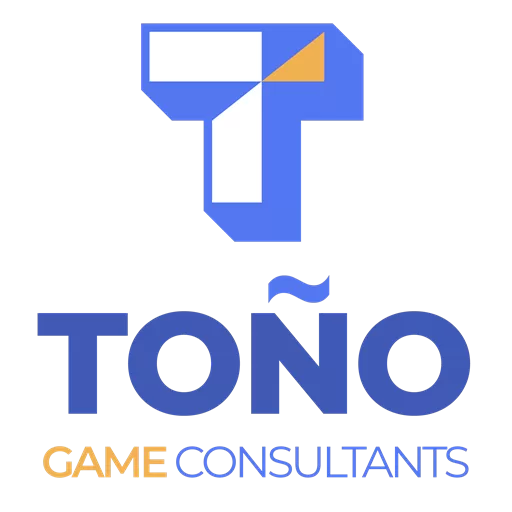Day #272. You’ve spent months building your dream game. The world feels alive, the mechanics are tight… and then your engine crashes. Progress halts, frustration sets in, and you wonder: “Could I have avoided this?”
That’s where engine proof comes in, the unsung hero of game development that could’ve saved your bacon.
If you’ve read our game development tips, you know the value of testing ideas early. Engine proof applies that same philosophy to your tools: validating your technology before you bet the whole project on it.
Think of it like test-driving a car before you buy. A car might look perfect in the showroom, but only a drive reveals if it handles well under pressure. Game engines are no different. You need to stress them early, before your grand RPG or physics-heavy puzzle collapses into a slideshow.
Example: you dream of a huge dynamic city filled with reactive NPCs. Sounds great, but can your engine actually handle thousands of AI routines? Engine proofing catches these blockers early, so you can adjust scope (and avoid scope creep), optimize, or scale back before the game implodes.
It’s not glamorous, but skip this step and you’re basically daring your game to collapse later. Done right, engine proofing becomes your roadmap: it tells you where bottlenecks live, how far you can push, and what tradeoffs you’ll need to make.
Key Elements of Engine Proof
So what does engine proofing actually involve? Think of it as a checklist of stress tests every team should run:
1. Performance Testing
Stress your engine with heavy loads—particles, physics, and dozens of entities—to see where frame rates drop. The goal is to expose bottlenecks early (CPU, GPU, or memory) and fix them before production.
2. Asset Management
Smart teams avoid bloated builds. Optimize textures, reduce poly counts, and compress audio where possible. Use asset streaming so memory loads only what’s needed, instead of everything at once.
3. Physics & Collision
Glitches like falling through floors or ragdolls flying into infinity are funny once—but disastrous in production. Test physics under load and simplify hitboxes or collision meshes when necessary.
4. AI & Pathfinding
Poor AI looks like NPCs wandering in circles. Stress-test how many agents your engine supports before slowdowns hit. Check pathfinding in both open and obstacle-heavy environments.
5. Multiplayer & Networking
Lag ruins everything. Start small, then ramp up player counts until you find the breaking point. Test synchronization so every player sees the same thing in real time.
6. Platform Compatibility
Your game might fly on a dev rig but choke on lower-end hardware. Test across targets—PC, console, mobile—and make sure controls and UI scale naturally.
7. Memory and Resource Management
Even if your game runs smoothly in short sessions, poor memory use can crash it in longer playthroughs. Memory leaks, inefficient garbage collection, or loading everything at once are silent killers.
Stress-test for:
-
Long play sessions (does performance degrade over time?).
-
Efficient asset streaming (load what’s needed, when it’s needed).
-
Proper garbage collection (avoid random frame hitches).
Good resource management ensures stability over hours of play—not just minutes.
8. Scalability
Engine-proofing for scalability means testing how your systems hold up as you add more content, players, or expansions. That includes making sure all game development disciplines (programming, art, design, and QA) can grow together without breaking pipelines.”
9. Additional Services Your Game May Require
Engine proofing goes beyond just stress-testing performance or checking assets. Sometimes your project needs specialized services to keep things on track:
-
Content validation → catching missing textures, broken references, or inconsistent assets (especially in large UE5 projects).
-
Custom debugging → tackling those “hard to catch” issues like physics glitches, memory leaks, or rare performance spikes.
-
Workflow and team organization → aligning how programmers, artists, and designers hand off work so nothing gets lost.
-
System integration → testing whether third-party tools or services (analytics, online features, monetization plugins) can actually handle your game’s demand.
These aren’t always needed day one, but identifying them early prevents costly surprises later. A good technical review highlights when to bring in extra support—and helps prioritize what truly matters to hit your milestones.
⚙️ Ready to See If Your Tech Holds Up?
Engine proof is just one part of building a stable, future-proof game. Our free Game Studio Tech Check Quiz helps you find gaps in your setup—from source control to build systems—and shows you how close your project is to being production-ready.
👉 Take the Tech Check Quiz
When and How Should You Do Engine Proof?
If you wait until your game is halfway done before checking whether your engine can handle it, you’re setting yourself up for failure. By then, every fix is expensive and disruptive.
The smart move is to start engine proofing at the very beginning, before you lock in your design or sink months into production. Think of it as an early warning system: a way to spot technical red flags before your scope outpaces your tools.
1. Start Early: Concept Stage
Before sketching characters or building worlds, ask the tough question: Is this idea engine-friendly?
-
Planning a huge open world? Check if your engine can handle streaming environments.
-
Want real-time multiplayer? Test network stability early.
-
Dreaming of complex physics or dynamic weather? Make sure your engine isn’t going to choke.
At this stage, engine proofing is a stress test of your vision against the reality of your tools. Catching limits now saves you months of wasted work later.
2. Choose the Right Engine: The Goldilocks Zone
Not every engine is built for every game. The trick is finding the one that’s “just right” for your project, powerful enough to deliver your vision, but practical enough for your team to use effectively.
Here are the core factors to evaluate (and test early):
-
Scope & Complexity – Does the engine support the size and ambition of your game? Look at past titles built with it.
-
Performance & Platforms – Can it run smoothly on your target platforms (PC, console, mobile)? Does it scale well across hardware tiers?
-
Features & Tools – Does it cover your needs (multiplayer, physics, lighting) natively or with strong plugins? Is the ecosystem/community active?
-
Team Experience – How familiar is your team with the engine? A steep learning curve can derail timelines.
-
Cost & Licensing – Is it affordable for your budget? Be clear on revenue-sharing terms before committing.
-
Long-Term Support – Is the engine actively updated, or are you betting your game on tech that’s losing momentum?
-
Scalability – Can the engine grow with your game (more content, more players, more features) without requiring a total rebuild?
Pro tip: Don’t just read feature lists—test it yourself. Build a small scene that mirrors your game’s scope: a few NPCs, some effects, basic physics. See how the engine holds up before you commit.
3. Stress-Test Everything
Once you’ve settled on an engine, push it to the edge. Stress-testing means throwing extreme scenarios at your game to see what breaks:
-
Double or triple the number of NPCs and objects on screen.
-
Simulate chaotic events like boss fights, explosions, or physics-heavy battles.
-
Run it on low- to high-end hardware to test platform compatibility.
The goal isn’t to make it perfect now, it’s to uncover cracks before they sink your production. Stress-testing early gives you a reality check on what’s feasible and helps prevent scope creep later.
4. Build a Vertical Slice: Test the Core
Instead of jumping straight into full production, build a vertical slice of your game. Think of it as a small, functional demo that proves your mechanics, assets, and systems work together inside the engine.
It doesn’t need every level, but it should include your core gameplay loop. If this slice runs smoothly after stress-testing, you’ll know your engine and design are aligned.
(Pro tip: This isn’t the same as a “vertical slice” used for publisher pitches. Here, the goal is stability, not marketing polish.)
5. Iterate and Optimize
Engine proofing isn’t a one-time checkbox—it’s an ongoing cycle: test → break → optimize → repeat.
As you refine:
-
Trim or compress heavy assets.
-
Simplify physics or AI systems that cause bottlenecks.
-
Balance ambition with performance—sometimes a background texture doesn’t need to be 4K.
The goal is smooth, reliable performance on your target platforms, not perfection on your dev machine.
When to Repeat the Process
Engine proofing is an early-stage process. You run it once, before committing to full production, to confirm that your chosen engine and tools can handle the game you want to build. After that, you don’t “re-proof” the engine, you review and verify new services or features as they come in.
Typical checkpoints for review include:
-
Adding major new features (e.g., multiplayer, advanced AI).
-
Preparing platform-specific builds (console, mobile, PC).
-
Expanding your game with DLC, live ops, or large content updates.
The difference is key: your original engine proof gives you the baseline. Every later review is about checking whether what you’re adding still fits within that baseline, or whether it requires optimization, adjustment, or even reconsidering scope.
Think of engine proof as the blueprint check. Every new addition just needs to be measured against that blueprint to avoid nasty surprises.
Busting the Biggest Myths About Engine Proof
Even experienced developers sometimes get engine proof wrong. Let’s clear up a few myths:
-
“We can worry about engine proof later.”
Waiting until mid-project is a disaster waiting to happen. Proof early, or risk finding out too late that your dream game is too big for your engine. -
“If the engine worked for their game, it’ll work for mine.”
Wrong. Engines have strengths and weaknesses. What worked for a farming sim might flop in your physics-heavy shooter. Test for your specific project. -
“It’s just about performance.”
Smooth framerate is only one piece. Engine proof also covers AI, physics, scalability, and tools. -
“Popular engines don’t need proofing.”
Even Unity or Unreal have limits. AAA studios still spend months optimizing. Popular ≠ perfect. -
“Only big projects need engine proof.”
Indie platformers and 2D games hit walls too. No game is too small to benefit from early testing. -
“Once we’ve engine proofed, we’re done.”
Wrong again. Engine proofing is continuous. Every major feature or expansion should trigger another round of testing.
Closing
Engine proof isn’t theory, it’s the difference between finishing your game on schedule and burning months on avoidable rebuilds. If you’re ready to move beyond checklists and get tailored guidance, book a Game Development Tech & Production Review.
In just a couple of weeks, we’ll help you:
-
Validate your engine and tools against your vision.
-
Spot hidden risks in your pipeline before they blow up.
-
Plan smarter milestones with realistic scope.
Frequently Asked Questions About Engine Proof in Game Development
What is engine proof in game development?
Engine proof is the process of validating whether your chosen game engine can handle the scope, features, and performance requirements of your project before you go deep into production. It’s like a reality check, making sure your vision and your tech actually align.
When should engine proof be done?
Engine proofing should be done at the concept stage, before you commit to full production. That’s when it’s easiest to catch limits and adjust scope. Later on, you only need to review when adding major new features or switching tools.
Is engine proof only for AAA games?
Not at all. Even small indie games benefit from engine proof. A 2D game with poor optimization can perform badly on mobile devices just as easily as a giant open-world RPG can overload a console. Engine proof helps teams at every scale avoid costly mistakes.
Does engine proof replace playtesting or QA?
No. Engine proof validates technology and performance. Playtesting validates player experience, and QA validates stability. All three are critical, but they focus on different parts of development.
How do you actually engine proof a game?
The process includes:
-
Performance testing (stress scenes, particle systems, AI loads).
-
Asset management checks (texture sizes, poly counts, streaming).
-
Physics, AI, and networking validation.
-
Cross-platform tests if you’re targeting multiple devices.
-
Scalability checks for future expansions or live ops.
What happens if my engine can’t handle my game idea?
That’s exactly why engine proof is important. If the engine shows limits, you can:
-
Optimize or simplify features.
-
Scale back scope to fit reality.
-
Switch engines before you’ve invested too much.
How long does engine proof take?
It depends on the project size. For most indie or AA teams, engine proofing takes 1–2 weeks of focused testing. Larger projects may spend a month or more exploring edge cases and validating multiple systems.
What’s the risk of skipping engine proof?
If you skip engine proof, you’re gambling with your entire project. The engine might not properly support your game vision, and by the time you discover it, you could be so deep in production that the only option is to restart development in a new engine. That means throwing away months (or years) of work, losing team morale, and potentially burning through your budget. It’s not just performance hiccups, it’s project-killing risk that can derail even the most passionate teams.


